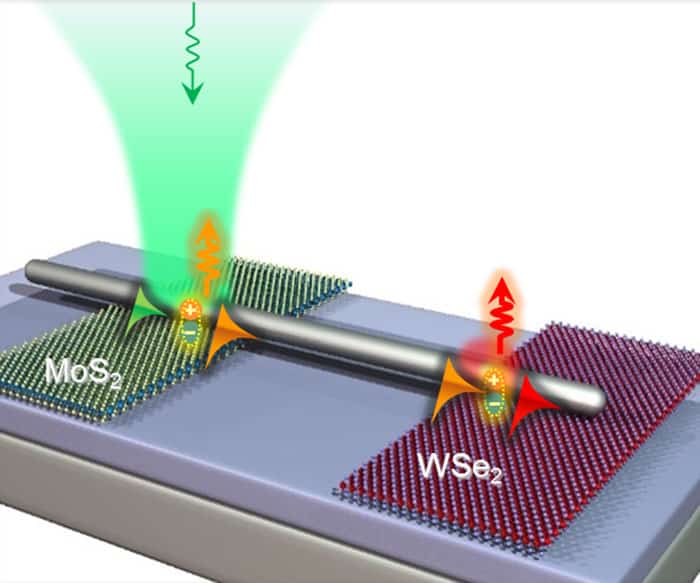Flash Physics is our daily pick of the latest need-to-know developments from the global physics community selected by Physics World‘s team of editors and reporters

Spin-Hall effect switches insulator’s magnetic state
The magnetization direction of a magnetic insulator has been switched by passing an electrical current through a metal layer adjacent to it. The new switching technique has been developed by Caroline Ross, Geoffrey Beach and colleagues at the Massachusetts Institute of Technology in the US, who describe it in Nature Materials. The technique takes advantage of the spin-Hall effect, whereby an electrical current can generate a spin current that flows in a direction perpendicular to the charge current. In this experiment, the electrical current flows along a layer of platinum that is adjacent to a layer of garnet – which is a magnetic insulator. “The spin current interacts with the magnetic moment of the garnet, exerting a spin torque on it, and this torque is strong enough to switch the garnet’s magnetization,” explains Ross. The technique could be used to write information to magnetic memory devices based on magnetic insulators. Data are currently written to magnetic memories by generating magnetic fields, which is much trickier and expensive to achieve than simply creating an electrical current. “We can also use electric effects to read back the state of the magnetic material, which allows us to make an all-electrical magnetic device,” adds Ross. A longer version of this article appears on nanotechweb.org.
“Big Bell Test” will use human randomness to test quantum physics
Twelve physics labs worldwide will conduct a series of quantum-physics experiments on 30 November with the help of a global army of volunteers. Dubbed the “Big Bell Test“, the event involves members of the public playing an online game that challenges players to create random sequences of binary bits. These numbers will then be used to control experiments that perform Bell tests. These test the idea that two quantum particles such as photons can be in an entangled state in which a measurement on one particle instantaneously affects the other – no matter how far apart they may be. Named after the physicist John Bell – who derived an inequality that quantifies entanglement – Bell tests have proven difficult to do in the lab. This is because practical implementations include one or more “loopholes” whereby non-quantum effects cannot be ruled out as the cause of the observed entanglement. The Big Bell Test aims to use human-generated random numbers to ensure that measurement biases are not introduced into several Bell-test experiments. The event is co-ordinated by the Institute of Photonic Sciences in Barcelona. It begins on Wednesday at 00:00 local time in Brisbane, Australia and ends at 23:59 local time in Boulder, Colorado, US.
Quasiparticles multiplex light

An optical device that uses quasiparticles to convert one optical signal into two signals at different colours has been unveiled by Hyun Seok Lee and colleagues at the Institute for Basic Science, in Suwon, Korea. The device comprises two tiny pieces of semiconductor – molybdenum sulphide and tungsten selenide – that are about 2 μm apart and connected by a tiny silver nanowire. The device works by shining green light onto the nanowire at the molybdenum-sulphide side of the device. This creates quasiparticles called surface plasmon polaritons (SPPs) on the silver. The SPPs then create electron–hole pairs in the molybdenum sulphide. These pairs remain bound to each other and are described as quasiparticles called excitons. Eventually, the excitons decay and some of their energy goes into creating orange light, which is emitted from the device. The remaining energy creates new SPPs, which propagate along the nanowire to the tungsten selenide. There the SPPs create more excitons, which then decay to create red light that is emitted from the device. As a result, the device works as a multiplexer that converts green light into orange and red light. The conversion process occurs very quickly and this combined with the tiny size of the device means that it could someday find use in high-speed computers of the future that use light – rather than electrical signals – to process information. The device is described in Nature Communications.
- You can find all our daily Flash Physics posts in the website’s news section, as well as on Twitter and Facebook using #FlashPhysics. Tune in to physicsworld.com later today to read today’s extensive news story on a new gravitational wave detector.



